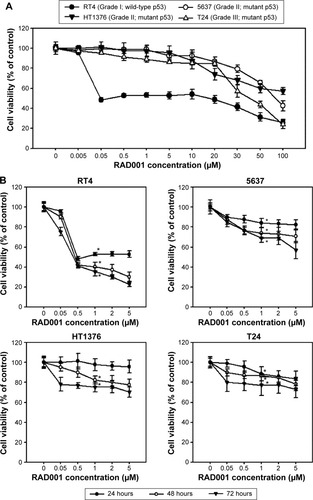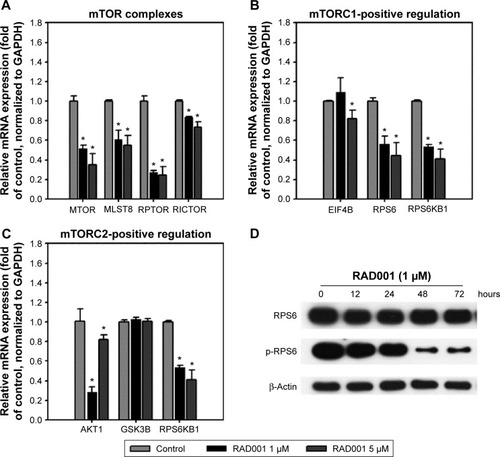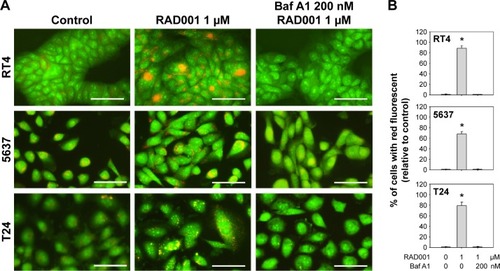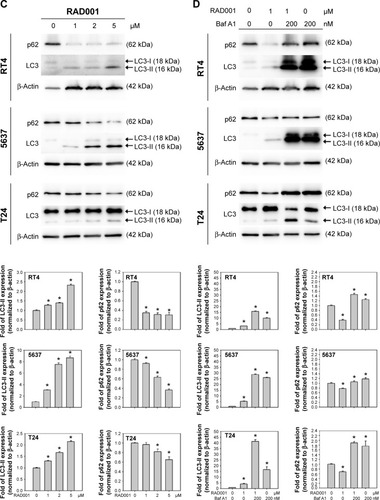Figures & data
Figure 1 RAD001 decreased cell viability in human bladder cancer cells.
Abbreviations: SD, standard deviation; TCC, transitional cell carcinoma.

Figure 2 Inhibition of mTOR-related genes and mTORC1 downstream effectors by RAD001.
Abbreviations: mTOR, mammalian target of rapamycin; SD, standard deviation; p-4EBP1, phospho-4EBP1; p-RPS6, phospho-RPS6; mTORC1, mTOR complex 1; mTORC2, mTOR complex 2; qPCR, quantitative polymerase chain reaction; mRNA, messenger RNA.

Figure 3 RAD001 induces autophagy in human bladder cancer cells.
Abbreviations: AVO, acidic vesicular organelle; AO, acridine orange; SD, standard deviation; Baf A1, bafilomycin A1.


Figure 4 Inhibition of autophagy increases RAD001-induced cytotoxicity.
Abbreviations: Baf A1, bafilomycin A1; CQ, chloroquine; SD, standard deviation; 3-MA, 3-methyladenine.

Figure 5 Coordinate inhibition of autophagy and mTOR enhances apoptosis in human bladder cancer cells.
Abbreviations: mTOR, mammalian target of rapamycin; SD, standard deviation; Baf A1, bafilomycin A1; 3-MA, 3-methyladenine.

Table S1 Primer sequences for qPCR detection of mTOR-related genes
